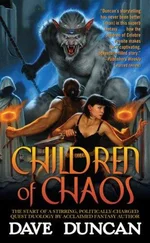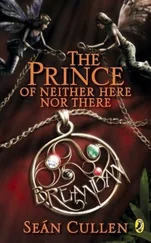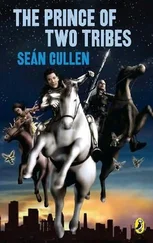New York Times columnist David Brooks devoted an op-ed piece to the team’s conclusions. Tom Klebold read it. He didn’t like it. He sent David Brooks an e-mail saying so. Brooks was struck by how loyal Tom still felt toward Dylan. After several exchanges, Tom and Sue agreed to sit down with Brooks to discuss their boy and his tragedy—the first and only media interview any of the four parents has ever given.
It turned out that they were kind of angry, too. Sue recounted an incident where she was offered absolution. “I forgive you for what you’ve done,” the person said. That infuriated Sue. “I haven’t done anything for which I need forgiveness,” she told Brooks.
But mostly Tom and Sue were bewildered. They were convinced that jocks and bullying had been behind it, but jocks and bullies are everywhere and few kids are trying to blow up their high school. They were bright people, and they knew they weren’t qualified to offer an explanation for their son’s crimes. “I’m a quantitative person,” Tom said. He was a scientist and a businessman. “We’re not qualified to sort this out,” he said.
They had run it over and over in their heads; they had tried to be objective, and they could honestly say they could rule one cause out. “Dylan did not do this because of the way he was raised,” Susan said. They were emphatic about that. “He did it in contradiction to the way he was raised.”
They were aware the public had reached a different verdict: the primary culprits were them. When Brooks met them, Tom had a stack of news stories documenting their poll numbers: 83 percent blamed the two of them and Eric’s parents. In five years, the figure had barely budged. For the Klebolds, judgment was the price of silence. And it stung.
The public condemned them, but those close to the family did not. “Most people have been good-hearted,” Tom said.
He and Sue accepted responsibility for one tragic mistake. Dylan was in agony; they’d thought he would be just fine. “He was hopeless,” Tom said now. “We didn’t realize it until after the end.” They had not induced Dylan’s homicide, they believed, but failed to prevent his suicide. They failed to see it coming. “I think he suffered horribly before he died,” Sue said. “For not seeing that, I will never forgive myself.”
Tom and Sue preferred to talk about Columbine as a suicide. “They acknowledge but do not emphasize the murders their son committed,” Brooks wrote. What they really yearned for was an authoritative study that would explain why Eric and Dylan did it. Yet they had just read the analysis by some of the top experts in North America; they had dismissed it for providing the wrong explanation. They complained that Dr. Fuselier had assessed their son without interviewing them. Fuselier was dying to.
Mostly, the four parents remain a mystery. They have chosen that path. But David Brooks spent enough time with the Klebolds to form a distinct impression, and he has proven himself a good judge of character. He concluded his column with this assessment: Dylan left Tom and Sue to face terrible consequences. “I’d say they are facing them bravely and honorably.”
The Klebolds wanted to understand what happened. They wanted to help other parents like them. They did not feel safe talking to the press, but they talked to a pair of child psychologists, under the condition that they not cite them directly. They were writing a book about teen violence. The problem was that at the time they published, the authors had no access to the crucial evidence.
____
Patrick Ireland slips his right foot into a hard plastic brace every morning as he gets dressed. He twists open a prescription bottle and swallows a dose of antiseizure meds. He walks with a limp. His mind is sharp, but he hesitates occasionally to find the words. His friends don’t notice. He knows. It’s not quite like before.
Patrick rarely thinks about before. Life is different than he imagined before. Better. Shoes are an issue, because of the brace. And his big toe is crooked inward, scrunches the others over. The little toe on his right foot sticks way out—nobody makes a shoe that wide. The doctors never set his foot right. “My dad’s pretty pissed off,” he said.
He still hangs out with many of his high school buddies. They don’t talk about the massacre much, which is what many of the survivors report. It isn’t emotional anymore, just boring. They’re done.
He is tired of interviews, too. Occasionally he agrees to one. Reporters generally approach the library ordeal gingerly, but Patrick just plunges in, describing it unemotionally, as if recapping a movie. When he did Oprah’s show, she played a clip of him going out the window.
“Whoa!” she said. “So is it difficult for you to see that video?”
“No.”
“It’s not? OK.”
He felt good watching it, actually. He felt a sense of accomplishment.
Patrick got a perplexing voice mail one morning in the spring of 2005. It was an old friend he hadn’t heard from in a while, wishing him well “today,” hoping he was all right. Huh. Now, what could that mean?
That afternoon, Patrick dated a document at work: April 20. Was it anniversary time already again?
____
Linda Sanders felt every anniversary. Her mood began to sour each April; she got jittery, she could feel it coming.
She tried dating; that was impossible. Dave lingered, and men resented his presence. He was a national hero—who could compete with that?
“It’s, like, Top Dave Sanders ,” she said. “It’s not fair to another man to be compared to the man I’ve built. He’s so high on a pedestal he’s in heaven.”
She knew Dave would have wanted her to find someone. She pictured him up there saying, “Linda, I want somebody to hug you.”
“It’s impossible,” Linda said. “There’s nobody coming. I’m destined to be alone because of the way he left.”
Linda withdrew. She stopped answering the door, stopped answering the phone. For two years she hardly spoke at all. She sedated herself with Valium and alcohol. “I was like a vacant person,” she said, “going through the motions of life. I’d go to the store, I was going places, but I was empty.”
Her father worried. What could he do?
“I want my Linda back,” he said.
Linda never went back to work. She walks every day, and she looks after her parents. She does not go near the Columbine Lounge—too many memories, and too close to alcohol. She can’t watch movies with guns in them or read thrillers.
One of those Aprils, years after getting sober, she felt a sudden, desperate need for help. “I ran out the front door and I looked for any neighbor that was home,” she said. “I needed a hug, you know, I needed a hug. So I knocked on my neighbor’s door, she wasn’t home, so I went to my next neighbor, she was home. I walked in and she was reading a book. ‘You’re it,’ I said. And I can’t remember her name. I said I needed a hug. She looked at me and I was crying and she said OK. She gave me a hug.”
Linda still gets letters now and then from strangers who hear Dave’s story or hers and sense immediately how it was for Linda. Most people don’t. Most people see kids and they see parents. Every once in a while, someone gets how it was for the wife. A woman wrote to tell Linda she understood. “That letter came on a real bad day,” Linda said. “And it carried me. I hold that letter every night. That woman has no idea what she did for me.”
____
Several survivors published memoirs, and Brooks Brown wrote his take on the killers and his ordeal. None garnered a fraction of the attention of Misty Bernall’s book.
Читать дальше







